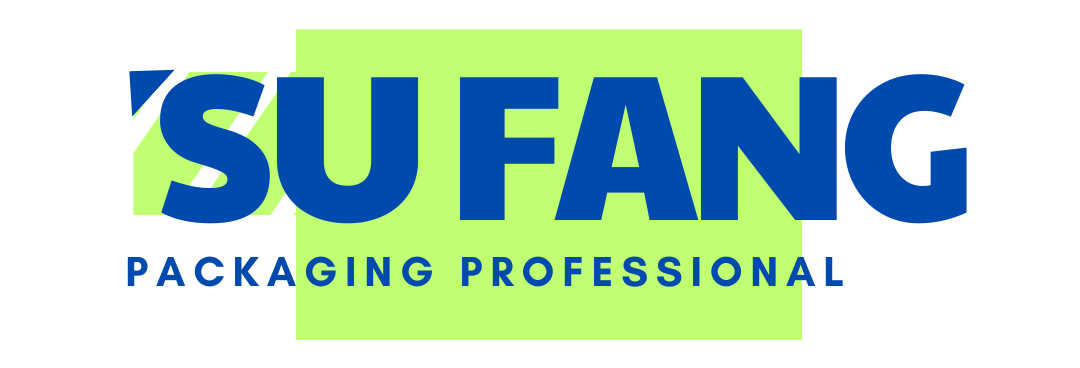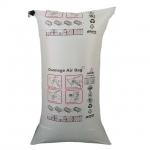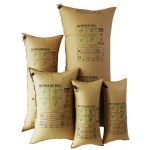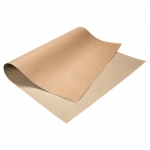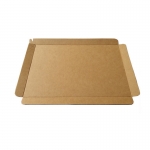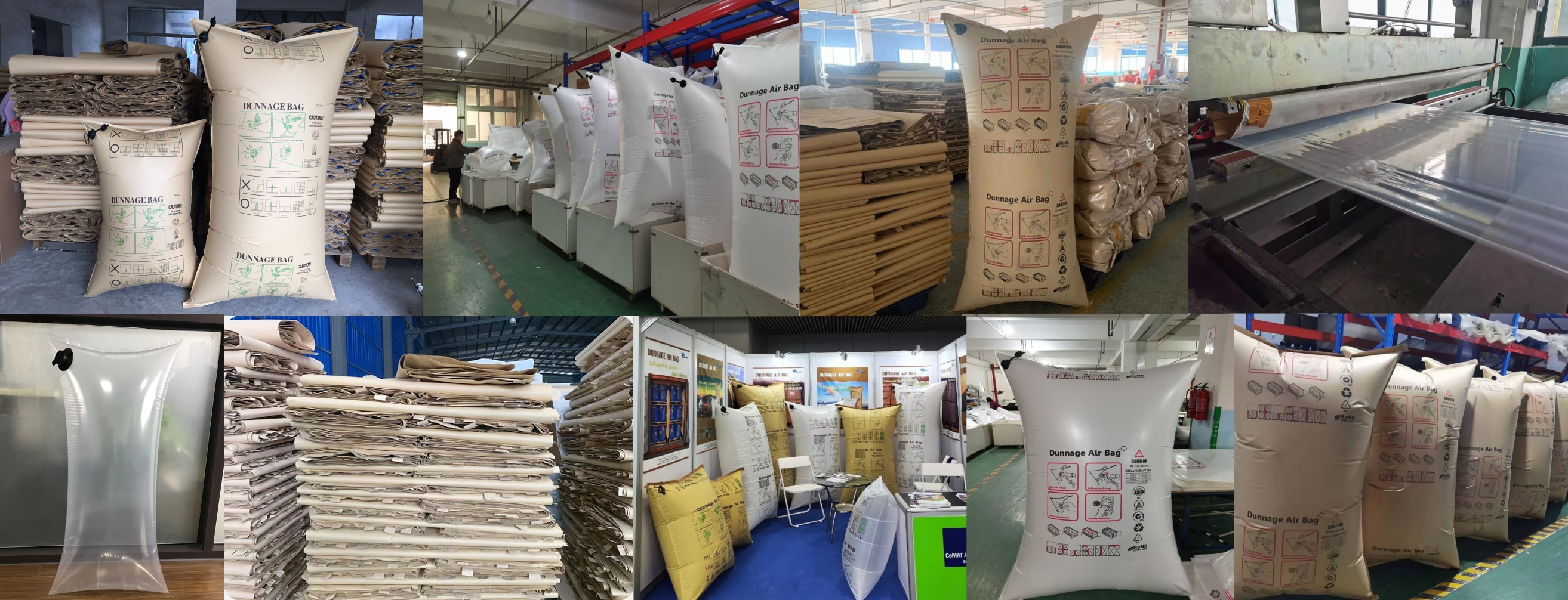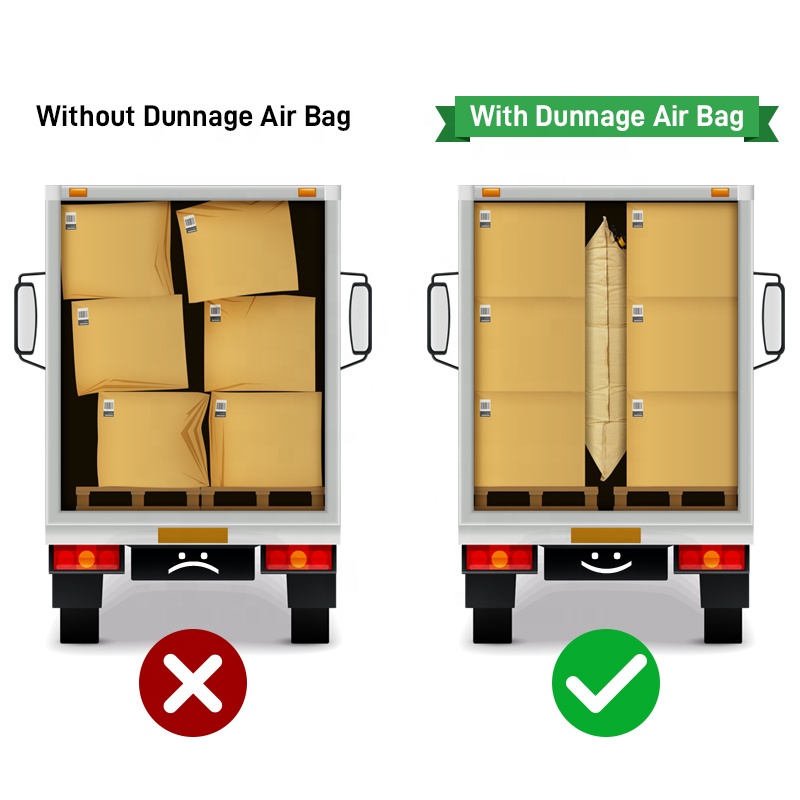
What are the most common causes of freight damage? - The most common causes of freight damage are related to freight falling forward to backward, and double and triple decked skids bouncing in transit.
What are the effects of shifting loads and damaged freight? - Valuable time is wasted putting the damaged freight back together at destination terminals. The necessity for "Re's" (Recouping, Restacking, Re-banding, Re-shrink-wrapping, and Re-working the load) adversely affect dock production and strain customer relations .
How has cargo been braced in the past? - Loads have been braced using a combination of empty pallets, 2 x 4's, and empty cardboard cartons. Shipments which included fragile cargo as part of the overall load, necessitated stair-stepping standard freight back-to or away-from the fragile freight.
What are the benefits of using Dunnage Air Bags - Dunnage Air Bags represent a less expensive means of blocking and bracing than the use of lumber and nails or expensive rubber air bags.
What are the benefits of using Air Bags to the shipper? - The trucking industry is in an ever-changing fight for survival. Fuel costs and taxes continue to climb, insurance premiums soar, wages increase and discounts continue to consume the bottom line. Operational improvements must be made to maintain profit margins. Air Bags will have the biggest impact on the load factor (a carrier's largest single expense). One of the primary goals of the shipping Quality process is to improve organizational productivity. Time spent installing Air Bags will be saved at the destination terminals, because the carrier can eliminate the "Re's". At the same time, better use can be made of container space.
How is this accomplished? - Air Bags permit double and triple-decking of skids, and stair-stepping can be eliminated. With Air Bags, fragile freight can be loaded anywhere in the trailer. Skids can be double or triple-decked, air-bagged either in front of, or behind (or both) the fragile freight, to achieve maximum cube utilization. Since the use of Air Bags will permit normal loading behind the fragile freight, eliminating the need for stair-stepping improves the load factor, and reduces line-haul or transportation costs.
Question: What type of Dunnage Air Bag is recommended for truck shipment?
Answer: 2 ply bags.
Question: What type of bag is most commonly used for overseas shipments?
Answer: 4 ply
Question: What type of Dunnage Air Bag is most commonly used for rail shipments?
Answer: 4 ply, 6 ply, or 8 ply
Question: How many pounds can a Dunnage Air Bag restrain?
Answer:
2 ply - 40,000 pounds
4 ply - 60,000 pounds
6 ply - 100,000 pounds
8 ply - 120,000 pounds
Question: How do I determine what size Dunnage Air Bag to use?
Answer:
1. Measure void between cargo
2. Measure distance from floor to top of load
3. Measure the length of the pallets or whatever you are trying to restrain.
Question: What is the maximum void recommended for Dunnage Bags?
Answer:
8" void - 24" wide Air Bag is recommended
10" void - 30" wide Air Bag is recommended
12" void - 36" wide Air Bag is recommended
15" void - 48" wide Air Bag is recommended
20" void - 60" wide Air Bag is recommended
24" void - 72" wide Air Bag is recommended
Question:What can be done to utilize Dunnage Bags if void exceeds maximum recommended void?
Answer: Should this situation exist, reduce unusually large voids with old pallets, corrugated, or some type of void filler
Question: Do Dunnage Bags require any type of protection?
Answer: To maintain product integrity, it is very important to place corrugated or some type of smooth surface on either side of the Dunnage Bag to protect it from rough edges (wooden crates, pallets, or anything sharp).
Question: What type of equipment is necessary to inflate Dunnage Bags?
Answer:
1. Compressed air from an air compressor
2. Inflator tool
3. Air gauge
Question: What type of Inflator Equipment is available?
Answer:
1. Quick fill snap on inflator
2. Quick fill combination inflator tool
3. Rapid fill inflator tool
4. Air compressor
5. Hose and reel
Question: Can Dunnage Bags be damaged during filling?
Answer:
Dunnage Bags can be cold burned and can burst with over-inflation. Each bag has a label with recommended pressure. If inflation check points are followed, it will eliminate these problems.
Question: Is a re-usable bag available?
Answer:
Yes, however, our concern with selling a re-usable bag is as follows:
1. We do not have any control over how a bag is used, therefore, we cannot guarantee how many times it can be used.
2. The re-usable costs more. Most customers do not have enough control to get the bags back, thus they pay for a bag to re-use that they do not get to re-use. Many times bags are punctured to release the air, making them unusable. We have a label available for the air bags which reads "Re-usable Bag DO NOT Puncture."
Versatile, practical, and easy to install, Dunnage Air Bags reduce labor costs and cargo damage, improve load factor, reduce transportation costs, compliment Quality process.
